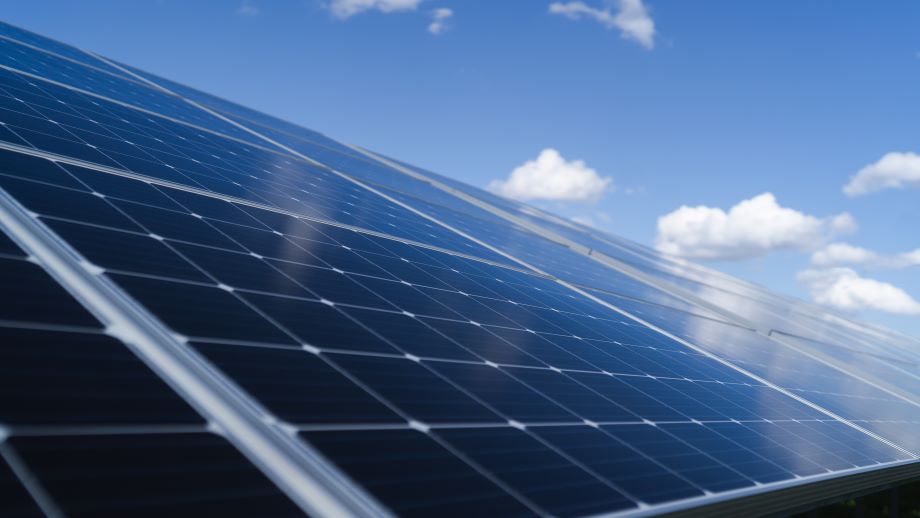Transforming Wastewater into Clean Water for Hydrogen Production
Transforming Wastewater into Clean Water for Hydrogen Production


By capturing the energy wasted through gas flaring to power reverse osmosis, researchers may have unlocked a way to produce pristine water for hydrogen.
Green hydrogen is produced by splitting water using renewable energy. While wind and solar energy are abundant in places like Texas, these regions often lack the clean water needed for green hydrogen production. Oil and gas extraction in the Permian Basin, for example, results in harmful byproducts, including wastewater and gas flaring.
Treating wastewater to produce clean water locally for hydrogen production can be cost-effective and environmentally beneficial, reducing the need for expensive transport and disposal. Vaibhav Bahadur, an associate professor and Eckhardt Fellow, Walker Department of Mechanical Engineering, at the Cockrell School of Engineering of the University of Texas at Austin, is researching methods to repurpose wastewater treatment byproducts for “green” hydrogen production.
As detailed in “Reverse osmosis-based water treatment for green hydrogen production,” recently published in Desalination, a new way to potentially produce green hydrogen involves using the energy wasted via gas flaring to power reverse osmosis, a common, low-energy technique used for municipal water treatment. Since hydrogen production requires pristine water, this process satisfies that need by removing salts and other elements.
“It innovatively uses two waste streams—energy and water—to create a valuable commodity, ultrapure water, which can then be used to produce green hydrogen,” explained Bahadur.
Reverse osmosis is a membrane-based technique, known for its low energy consumption, and is typically used in municipal and seawater treatment. But through modeling, the researchers can demonstrate their potential to effectively treat significant volumes of water produced from oil and gas operations, yielding water suitable for green hydrogen production.
This method could significantly contribute to the green hydrogen industry, especially in areas with abundant renewable energy but scarce clean water.
Low energy, large volumes
Since the reverse osmosis process uses relatively low amounts of energy to treat large volumes of wastewater, the method is “very promising,” Bahadur said. “This research was not about developing new membranes or materials for water treatment. It was an analysis of existing materials and systems, most of which are commercially available. This implies that this technology is very close to ‘shovel-ready’ and does not need years of further R&D before it can be put into practice.”
Similar Reading: Liquid-Metal Film Enables Artificial Photosynthesis
Hydrogen producers, such as energy and utility companies, as well as water treatment companies are the obvious direct beneficiaries of this research. However, there is also a clear benefit at the societal level for a lot of energy-rich but water-poor communities. Globally, a similar story unfolds, but in different shades.
“Green hydrogen is emerging as a critical pillar for meaningful large-scale decarbonization of the planet due to its advantages in storing fluctuating wind and solar energy outputs,” Bahadur explained. “While a lot of people want to focus on reducing the cost of green hydrogen by reducing the costs of renewables and the cost of electrolyzer equipment, reliable water access is also a critical factor. This research provides a pathway to strengthen water availability for green hydrogen production.”
Discover the Benefits of ASME Membership
While the penultimate goal is to transition to 100 percent carbon-free energy, a gradual shift from hydrocarbons to renewables is expected over the next few decades. Oil and gas will remain significant in the global energy mix, making it crucial to minimize their environmental impact. This research is particularly exciting because it repurposes harmful waste products from oil and gas production to develop greener energy solutions. By doing so, it supports oil and gas-producing states and communities in the energy transition, creating a win-win scenario.
Moreover, this work has significant global implications. Producing green hydrogen requires large quantities of high-purity water, which tap water cannot provide. The research underscores the importance of water treatment and management in hydrogen projects.
While not every region has wastewater from oil and gas fields, the solutions developed can be applied to seawater and groundwater, making the findings widely applicable. This approach could not only address environmental concerns but also ensure sustainable hydrogen production worldwide.
Jim Romeo is a technology writer in Chesapeake, Va.




